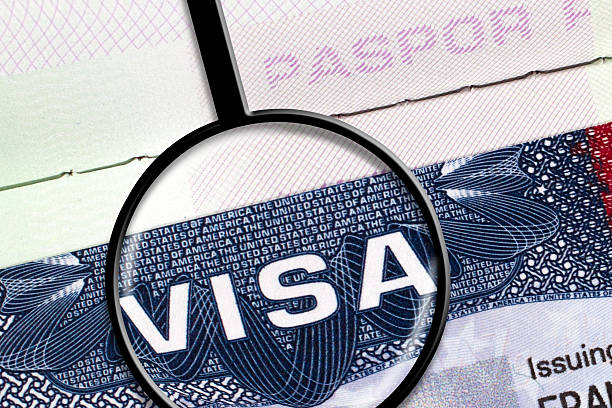In a significant development highlighting the deepening ties between the United States and India, the US government is on track to issue more than 1 million visas to Indian nationals in 2024. This milestone underscores the growing economic, cultural, and strategic relationship between the two nations, reflecting increased opportunities for Indian citizens to study, work, and visit the United States.
Visa Categories and Trends
The visas being granted span various categories, including:
- Student Visas (F-1 and J-1): With a robust increase in Indian students pursuing higher education in the US, student visas constitute a significant portion of the total visas issued. This trend is driven by the reputation of US universities, research opportunities, and the quality of education offered.
- Employment-Based Visas (H-1B, L-1): The demand for skilled Indian professionals continues to drive the issuance of H-1B visas, which are essential for Indian IT professionals, engineers, and other specialized workers. L-1 visas, facilitating intra-company transfers, also contribute to the substantial visa numbers.
- Tourism and Visitor Visas (B-1/B-2): There has been a steady rise in the issuance of tourist and visitor visas, reflecting increased travel for leisure, family visits, and business purposes between India and the US.
Economic Impact and Bilateral Relations
The granting of over 1 million visas to Indians in 2024 is not merely a statistic but also a testament to the economic benefits and cultural exchanges facilitated by these visas. Indian professionals contribute significantly to the US economy, particularly in sectors such as technology, healthcare, and finance. Likewise, Indian tourists and visitors contribute to the US economy through spending on travel, accommodation, and leisure activities.
Moreover, these visa numbers underscore the strategic importance of the US-India relationship. As two of the world’s largest democracies, the United States and India share common values of democracy, pluralism, and economic freedom. The deepening people-to-people ties through visas foster greater understanding and collaboration on global issues ranging from climate change to security challenges.
Challenges and Opportunities Ahead
While the increase in visa issuance is a positive development, challenges such as visa processing delays and policy changes remain a concern for applicants and stakeholders. Navigating the visa application process can be complex, requiring careful planning and compliance with US immigration laws and regulations.
Looking ahead, opportunities abound for enhancing visa facilitation processes, promoting cultural exchange programs, and further strengthening economic partnerships between the US and India. Initiatives aimed at streamlining visa procedures, enhancing consular services, and expanding mutual recognition of professional qualifications could further bolster bilateral relations.
The Rise of Indian Visa Applications
The surge in visa applications for Indian nationals encompasses various categories, each with its unique implications and significance. From student visas to visitor visas and employment visas, the demand for entry into the United States is reaching unprecedented levels. According to rajkotupdates.news, over 140,000 student visas were issued in 2023, cementing Indian students as the largest group of international graduate students in the US. Moreover, visitor visas, specifically B1/B2 visas, saw a remarkable rebound, with more than 700,000 applications processed, marking the second-highest figure in history. Additionally, over 380,000 employment visas were processed for Indians and their family members in 2023, reflecting the indispensable role of Indian talent in the US workforce.
Streamlining the Visa Application Process
Efforts to streamline the visa application process have played a crucial role in facilitating this surge in visa grants. From reducing wait times to increasing staffing, measures have been implemented to enhance the efficiency and accessibility of the application process. Rajkotupdates.news highlights significant improvements, including the reduction of appointment wait times for visitor visas from 1,000 days to approximately 250 days. Moreover, a three-month staffing surge in Mumbai addressed a 60% rise in applications, ensuring smoother processing and timely responses for applicants.
The Vital Role of US Consulates in India
Amidst the surge in visa applications, US consulates in India have emerged as key players in ensuring efficient visa processing and addressing logistical challenges. The Mumbai Consulate’s remarkable achievement in eliminating a backlog of over 31,000 immigrant visa cases underscores the dedication and efficacy of consulate staff. Furthermore, the consolidation of petition-based visa processing in Chennai and Hyderabad has streamlined operations, contributing to faster processing times and improved applicant experiences.
Looking Towards the Future
As we look ahead, several promising developments and initiatives are on the horizon, poised to further shape the landscape of Indian immigration to the United States. One such initiative is the pilot program for H1B holders, which aims to allow eligible visa holders to renew their visas within the United States, streamlining the renewal process and reducing administrative burdens. Additionally, there is a continued focus on employment visas, recognizing the critical role of Indian professionals in driving innovation and economic growth in the US.
Conclusion
The milestone of granting over 1 million visas to Indians in 2024 marks a pivotal moment in US-India relations, reflecting growing ties across education, employment, tourism, and beyond. As both nations continue to navigate the complexities of global challenges and opportunities, the role of visas as a bridge between people and cultures remains crucial. The ongoing commitment to fostering robust bilateral relations through enhanced mobility and collaboration underscores the shared commitment to prosperity, security, and mutual respect.

